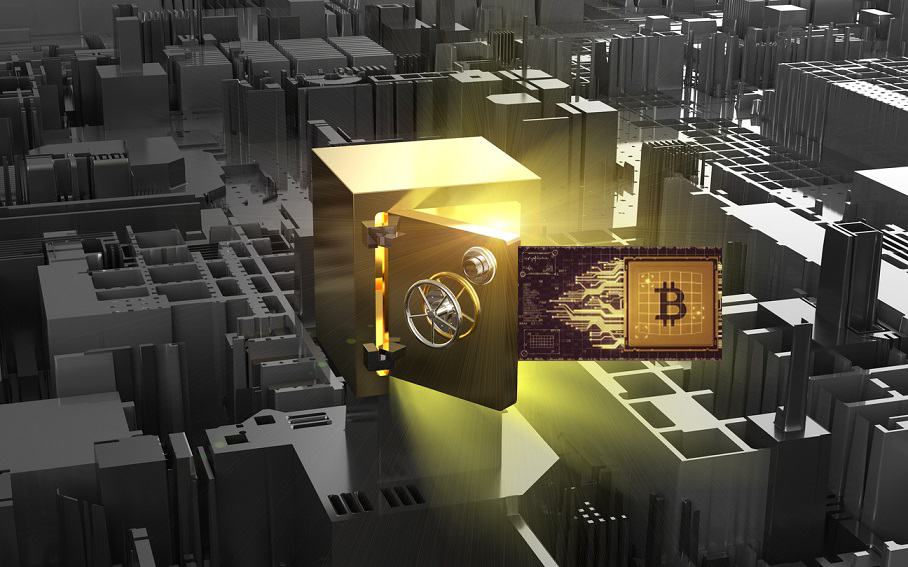Crypto custody refers to the procedure of protecting assets from theft. Custodians, who you can employ to manage your cryptocurrency on your behalf, serve as guardians of your funds, whether they are in the form of cash, stocks, gold bars, or digital assets.

One of the foundational elements of the conventional banking system, custodians have existed since the 1960s.
Custody of cryptocurrencies operates somewhat differently. Since all information and transactions are recorded on a public ledger known as the blockchain, digital asset custodians aren’t actually holding any of the assets. Instead, they protect users’ private keys, which are essential to a crypto wallet since they allow access to the money stored within.
For digital assets to be widely used, crypto custodians are crucial. Even now, a lack of security prevents many institutional investors from purchasing digital assets. Regulation mandates that organizations that manage significant sums of money, like hedge funds, pension funds, investment banks, and family offices, have a custody partner to protect their clients’ money.
The demand for crypto custody services soared as more institutional investors began dabbling in digital assets and businesses like MicroStrategy started putting significant sums of cryptocurrency on their balance sheets. According to a Blockdata analysis, the value of digital assets under custody increased from $32 billion in January 2019 to $223 billion in January 2022, a sevenfold increase.
How does crypto custody operate?

Cryptocurrency custody, put simply, is the act of protecting the private key that certifies your ownership of the money stored in your digital wallet. As required by law, all custodians in traditional banking are financial institutions. But with cryptocurrencies, owners can act as their own custodians. Using gold bars as an example, you have two options for keeping them secure: either you hide them beneath your bed for your own protection, or you pay a third party custodian to lock them in a vault guarded by security personnel.
Self-custody
As discussed, self-custody is when you personally hold the private key for your own wallet. This means you are the only one who can prove ownership of your funds and access your holdings. With great power, however, comes great responsibility. Being your own custodian means having complete control over your wallet, but it also means you bear all the risks too. If you lose access to your physical device (cold wallet) or forget the private key, your crypto will most likely be gone forever.
Third-party custody
Those who do not want to take the responsibility of managing their own accounts or find it too intimidating to deal with the tech might want to turn to a third-party custodian. These are registered, regulated financial institutions that have acquired a state-level or national license to act as a custodian.
This type of crypto custodian holds clients’ private keys to their wallets in a safe manner and ensures the security of their holdings. From the user’s point of view, it is similar to having a checking account with a bank. When you register to open an account, you must undergo know-your-customer and anti-money laundering checks. When you store crypto with a third-party custodian, you’ll be expected to complete the same sort of checks to make sure your cryptocurrency was not acquired through illegal means.
There are three different kinds of third-party crypto custodians based on the financial institutions:
- Exchanges
All centralized cryptocurrency exchanges take care of their customers’ crypto custody. Some crypto exchanges and platforms outsource their security needs to an external custody provider that safeguards the assets under management. In any case, it’s worth knowing that when you set up an account and hold assets on a centralized exchange, you do not hold the private keys to your exchange wallet. This exposes you to potential losses if the exchange is hacked or disappears with users’ funds.
- Digital asset managers
As cryptocurrencies have matured as their own asset class there has been an emergence of digital asset managers that act like banks for crypto holders. These institutions, like banks, are regulated and licensed to offer crypto custody. Most notable native crypto custodians include Anchorage, NYDIG and Paxos.
- Custodial banks
Starting in July 2020, every custodial bank in the U.S. can custody cryptocurrencies, too, after the Office of the Comptroller of the Currency (OCC) cleared the way for all nationally chartered banks to provide crypto custody services. This opened the door for custody giants such as BNY Mellon, Citibank and Fidelity to enter the crypto custody market.
Note that some of the third-party custody providers (Fidelity, BitGo, Bakkt) are only available for institutional investors. Others may require a minimum balance so high that it excludes most everyday holders from accessing their services. For example, Coinbase’s dedicated crypto custody service, Coinbase Trust, requires a whopping minimum balance of $500,000 in digital assets to qualify for its custody system.
Don’t fret if you don’t have that sort of money invested in cryptocurrency. Some custody providers have made their services available for retail clients, too. A few examples include:
- Blockchain.com
- Casa
- Gemini
- Nuri (formerly Bitwalla)
How much does third-party crypto custody cost?

As with any type of service, providers typically charge a number of fees for safekeeping your money, just as regular banks do when you have a checking or savings account. Moving crypto in and out of your account also can incur fees. These costs usually fall into one of the following three categories.
- Custody fee: Custodians ask for a certain percentage point based on the value of the assets under custody every year. This is usually less than 1%.
- Setup fee: a flat rate for opening a custodial account. It’s worth noting some crypto custodians waive the fee and let users open an account for free.
- Withdrawal fee: You might pay a fee every time you take crypto out of your account. This can be a flat rate or a percentage point of the value you withdraw.
As an example, U.S.-based Gemini has a 0.4% annual custody fee. The company waives the setup fee so you don’t have to pay to open an account but any withdrawal from the account costs $125, which is deducted from the crypto asset you withdraw.
If you choose to go with self-custody, you save on the custody, setup and withdrawal fees, but do not expect it to be free. The user has to take care of the wallet and buy a storage product to keep the private key safe.
DISCLAIMER: The Information on this website is provided as general market commentary and does not constitute investment advice. We encourage you to do your own research before investing.
Join CoinCu Telegram to keep track of news: https://t.me/coincunews
Follow CoinCu Youtube Channel | Follow CoinCu Facebook page
Annie
CoinCu News






















